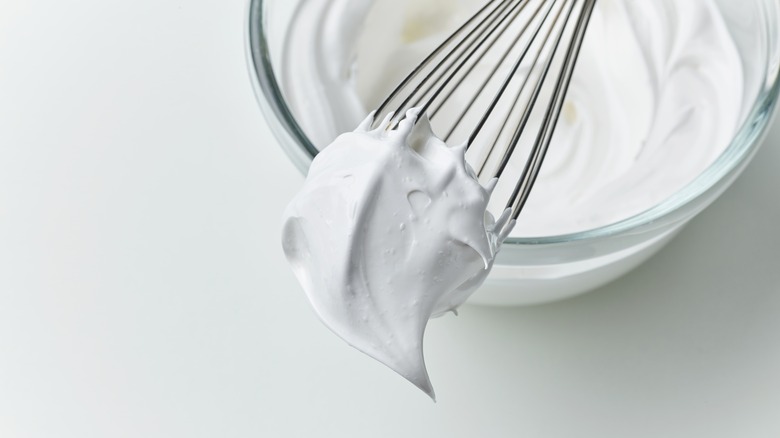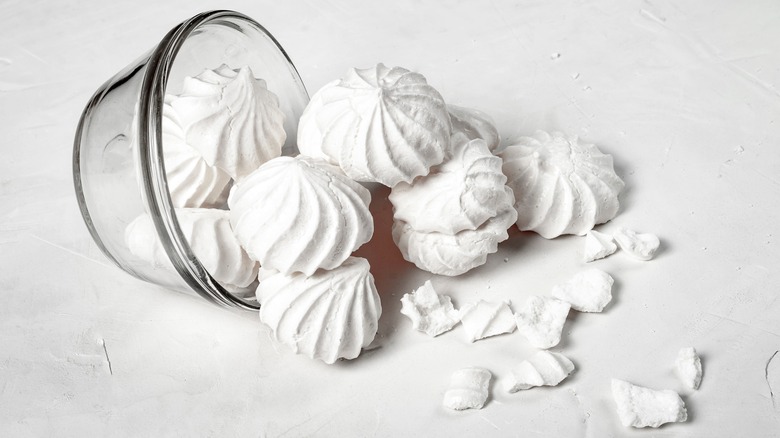Is Marshmallow A Type Of Meringue?
Marshmallows and meringue have a great deal in common. On the surface, they both seem specifically made to enchant the inner child in all of us, evoking an edible cloud or a freshly fluffed pillow for our mouths. But the similarity becomes even more apparent when you look beneath the surface.
If you compare a recipe for homemade marshmallows with a recipe for lemon meringue pie, you'll find that both confectionary delights are based on the same basic idea: sugar is suspended in an airy medium to create a unique combination of sweetness and lightness. With this parallel in mind, it might seem that marshmallows and meringue are part of the same family or that marshmallows may even be a subtype of meringue, albeit one with a humbler reputation. But the differences extend far beyond the bakery/campfire contrast. Two specific ingredients make marshmallows and meringue unique.
There are three types of meringue
There are subtypes of meringue, although marshmallows aren't one of them. The three subtypes are Italian meringue, French meringue, and Swiss meringue.
French meringue is the best-known variety, and it is made by whipping egg whites until they form soft peaks before adding sugar and whipping the mixture more until it forms stiff peaks. Italian meringue is made similarly, but the sugar is first made into a syrup which is then incorporated with the egg whites while it is still hot. Swiss meringue is a more distinct type, being denser and stiffer than the other two. It combines sugar and egg whites in a double boiler before whipping the mixture simultaneously. Meringues are typically made with either caster or icing sugar, but the thing to focus on here is how the sugar is added to another medium (egg whites) and whisked to incorporate air. You'll find a similar approach is taken with marshmallows.
Marshmallows are different from meringues, but they weren't always
Marshmallows are made in a very similar manner to meringues, with one key difference: the sugar is not whipped into egg whites to make an airy suspension; rather, it is whisked with gelatin. This accomplishes the same core purpose – create a light confection buoyed by tons of teeny, tiny air bubbles – however, gelatin makes marshmallows chewier than meringues.
Marshmallows also hold their form much better than meringues, as they have some spring to them. You can squeeze a marshmallow between your fingers, and it will bounce back into its original shape, and you certainly can't do that with meringues. However, the differences between marshmallows and meringues were not always so pronounced. In the 19th century, marshmallows were also made using egg whites combined with the sap of mallow roots, a plant native to Asia and Europe that happens to grow, you guessed it, in marshes.
While marshmallows and meringue are made similarly, and either of these beloved treats will surely satisfy a sweet tooth, they're not considered the same.


